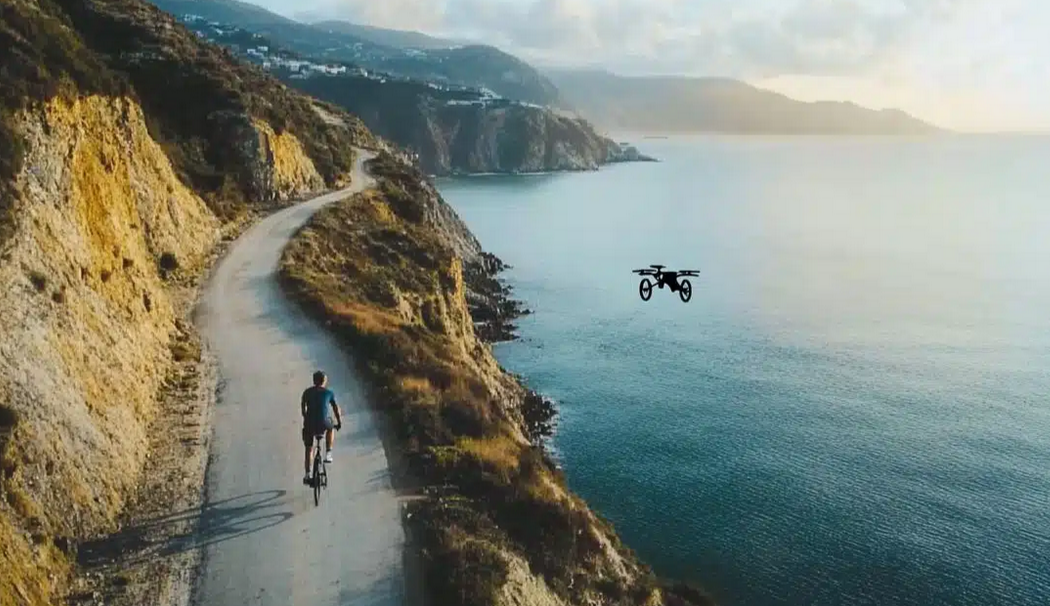Key Takeaways
The latest updates to the DJI Neo drone demonstrate DJI’s commitment to making advanced drone technology accessible for social media creators and action videographers. Key highlights include:
-
Enhanced tracking: Capable of following fast-moving subjects up to 20 mph in tracking mode, faster than manual control.
-
Vertical video shooting: Allows creators to film in 9:16 aspect ratio, optimized for TikTok and Instagram Reels, without cropping footage.
-
User-friendly updates: Features accessible via the DJI Fly App, though Android users may need to follow extra steps.
-
Improved social media workflow: Reduces post-production time by capturing mobile-friendly footage directly.
-
Affordable price point: At $199, the Neo offers an accessible entry point for content creators seeking professional features.
These enhancements make the Neo more versatile, efficient, and creator-friendly, solidifying its place in the budget-friendly drone market.
DJI, the global leader in consumer drones, has recently rolled out a series of significant updates for its $199 Neo drone, making it more versatile for action tracking and social media content creation. With enhancements like improved object tracking, faster speeds, and vertical video shooting, the Neo drone is now better suited for creators looking to capture dynamic scenes and mobile-friendly content.
Enhanced Tracking for Action-Packed Footage
One of the most notable upgrades to the DJI Neo is its enhanced tracking capabilities. Previously, the Neo struggled to follow fast-moving subjects, such as cyclists, runners, or other sports activities. The latest firmware update has addressed these limitations, allowing the drone to track motion with speeds equal to or exceeding that of the subject, even faster than when using a manual controller.
Tech reviewer DC Rainmaker, known for in-depth drone evaluations on YouTube, highlighted that the Neo’s improved tracking is particularly effective in tracking mode, making it ideal for action footage. Whether capturing a mountain biker navigating a trail or a skateboarder performing tricks, the Neo now ensures smoother, more reliable footage without frequent loss of focus or jittery camera movement.
Vertical Video Mode for Social Media Creators
Another major addition is the drone’s new vertical video mode, designed for creators producing content for platforms like TikTok, Instagram Reels, and YouTube Shorts. Previously, the Neo could only record horizontally, which often required cropping or post-editing to fit vertical formats.
Now, content creators can capture videos directly in the 9:16 aspect ratio, eliminating the need for additional editing while preserving video quality. While this feature is limited to 1080p HD, it offers enough clarity and detail for most social media applications. DC Rainmaker notes that, despite the lack of 4K vertical recording, the 1080p footage quality matches the Neo’s horizontal mode, making it suitable for most creators who prioritize ease and speed over ultra-high resolution.
How to Access the New Features
To utilize these new functionalities, users must update the DJI Fly App. The updated firmware unlocks both the vertical shooting mode and the improved tracking options.
It’s important to note that most flight modes won’t support vertical video until the app update is completed. For Android users, this update may require additional steps. DJI has not hosted the DJI Fly App on the Google Play Store for some time, meaning users may need to download the updated version directly from DJI’s website and adjust device settings to allow app installations from external sources.
Once updated, users can take full advantage of the Neo’s enhanced capabilities, including tracking speeds of up to 20 miles per hour (32 kph) in Sport mode, which surpasses the speeds achievable with manual control.
Practical Benefits for Content Creators
The combination of faster tracking and vertical video mode makes the Neo particularly appealing for social media influencers, vloggers, and content creators. Vertical video is increasingly the preferred format on mobile-first platforms, and the ability to capture footage directly in this orientation reduces post-production time.
For creators previously limited by the horizontal-only format, the update removes a significant barrier. Now, you can film mobile-friendly footage on the go, whether capturing an urban parkour session, a mountain biking trail, or a beach volleyball match.
Additionally, the improved tracking ensures that the Neo can keep up with moving subjects without requiring manual intervention, which is especially useful for solo creators or small teams. The drone can now reliably follow a subject, leaving creators free to focus on framing the shot and engaging with the camera.
Limitations and Considerations
While the vertical video mode is a major improvement, there are a few limitations to note:
-
Resolution: Vertical mode is limited to 1080p HD, so creators looking for 4K vertical footage will need to stick with horizontal orientation and crop in post-production.
-
Flight App Update Required: Users must manually update the DJI Fly App to access the new features, which can be a minor hurdle for some, particularly Android users.
-
Battery Life and Range: The Neo’s battery life remains consistent with previous models, which means longer flights or high-speed tracking can deplete power faster. Planning flights with battery management in mind is essential.
Despite these minor constraints, the new firmware significantly enhances the Neo’s functionality, particularly for fast-paced, social media-oriented use cases.
DJI Neo vs. Higher-End Drones
While the Neo is an excellent entry-level option for beginner and intermediate drone users, DJI also offers higher-end models, such as the Air 3S, for those seeking enhanced image quality and performance. The Air 3S features superior low-light capabilities, larger sensors, and advanced stabilization, making it a strong choice for professional photographers or experienced drone enthusiasts.
However, the Neo’s recent updates bring it closer to professional functionality, particularly in terms of tracking and social media-ready footage. At a price point of $199, the Neo now offers unprecedented value for beginner content creators, bridging the gap between budget-friendly drones and higher-end models.




